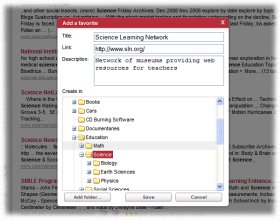|
Education
Web
Viewing 1-1 of 1 total results
different types of cells--grows into a fetus--baby is born— grows into a toddler—grows into a child—grows into a teenager—grows into an adult). AND • Explaining what occurs in the processes of fertilization and early embryo development (e.g., sperm + egg com- bi...
1
0
different types of cells--grows into a fetus--baby is born— grows into a toddler—grows into a child—grows into a teenager—grows into an adult). AND • Explaining what occurs in the processes of fertilization and early embryo development (e.g., sperm + egg com- bine to produce a new individual). Science Concepts: a. Following fertilization, cell division produces a small cluster of cells that then differentiate by appearance and function to form the basic tissues and organs of an em
25
0
http://education.vermont.gov/new/pdfdoc/pubs/grade_expectations/science.pdf#page=25
education.vermont.gov/new/pdfdoc/pubs/grade_expectations/science.pdf#page...
• Recognizing that all living and non-living things are formed from combinations of about 100 elements. Science Concepts: a. All matter is made up of atoms that are too small to see. b. Atoms bond together to form molecules. c. An element is a substance in which the atoms are all the same. d. All living and non-living things are formed from <span class="highlight">com</span>- binations of about 100 elements. S7-8:11 Not assessed at this level Properties of Matter S5-6:9 Students demonstrate their understanding of the Properties
96
0
http://education.vermont.gov/new/pdfdoc/pubs/grade_expectations/science.pdf#page=96
education.vermont.gov/new/pdfdoc/pubs/grade_expectations/science.pdf#page...
different types of cells--grows into a fetus--baby is born— grows into a toddler—grows into a child—grows into a teenager—grows into an adult). AND • Explaining what occurs in the processes of fertilization and early embryo development (e.g., sperm + egg <span class="highlight">com</span>- bine to produce a new individual). Science Concepts: a. Following fertilization, cell division produces a small cluster of cells that then differentiate by appearance and function to form the basic tissues and organs of an em
97
0
http://education.vermont.gov/new/pdfdoc/pubs/grade_expectations/science.pdf#page=97
education.vermont.gov/new/pdfdoc/pubs/grade_expectations/science.pdf#page...
an adult). AND • Explaining what occurs in the processes of fertilization and early embryo development (e.g., sperm + egg <span class="highlight">com</span>- bine to produce a new individual). Science Concepts: a. Following fertilization, cell division produces a small cluster of cells that then differentiate by appearance and function to form the basic tissues and organs of an em- bryo, which eventually grows into an adult organism. Patterns of Human Development No S7-8:43 at this grade level
|
